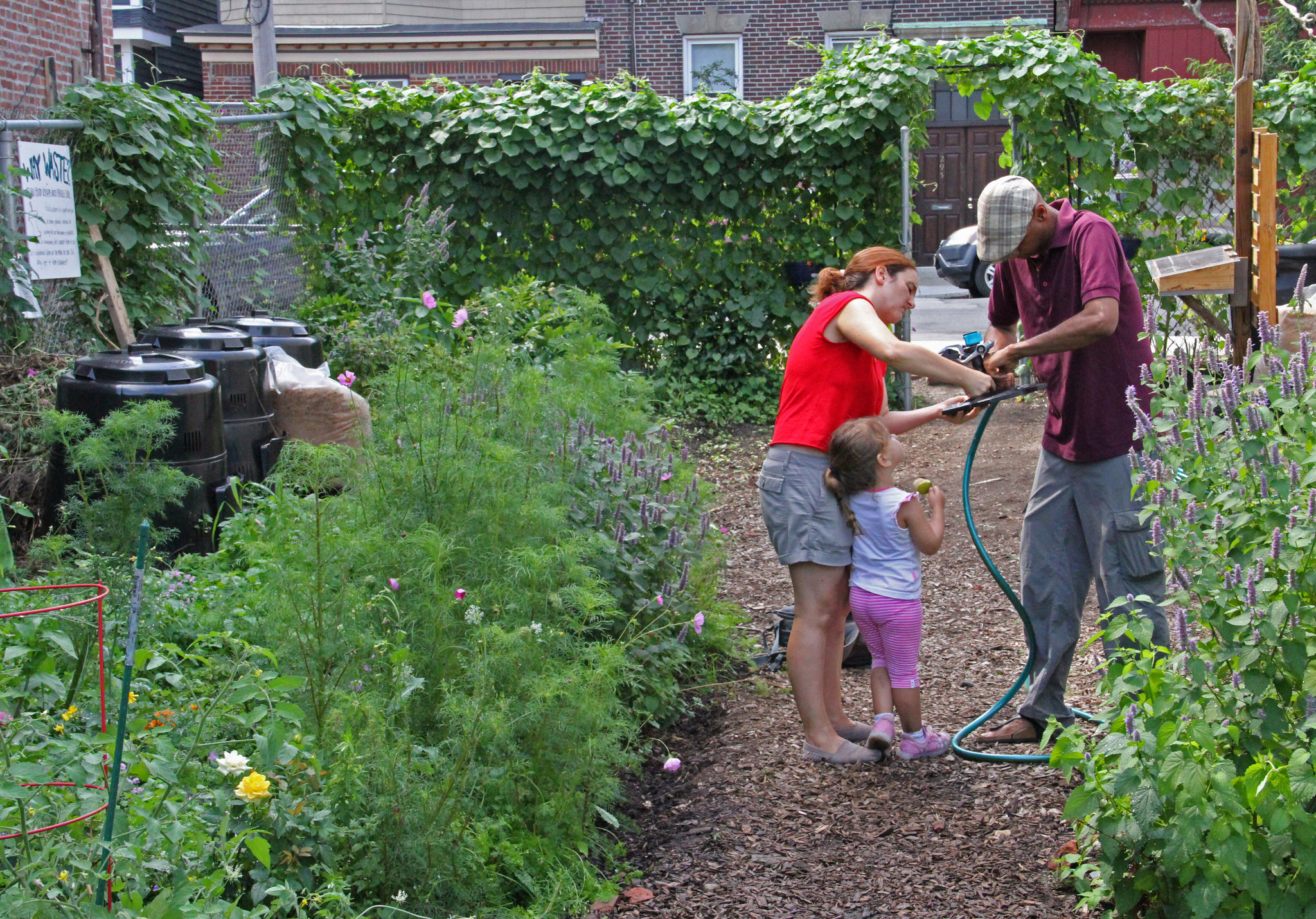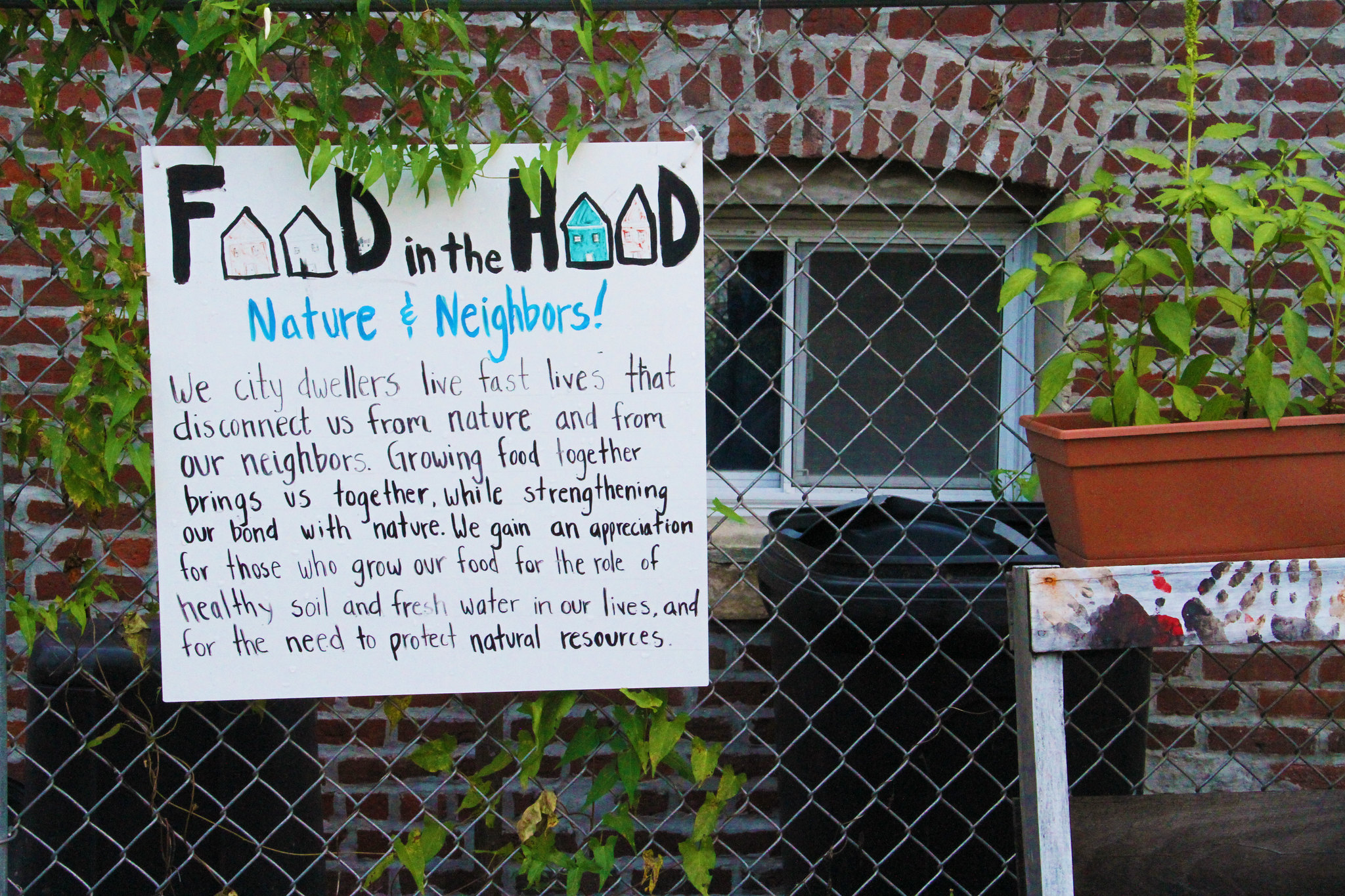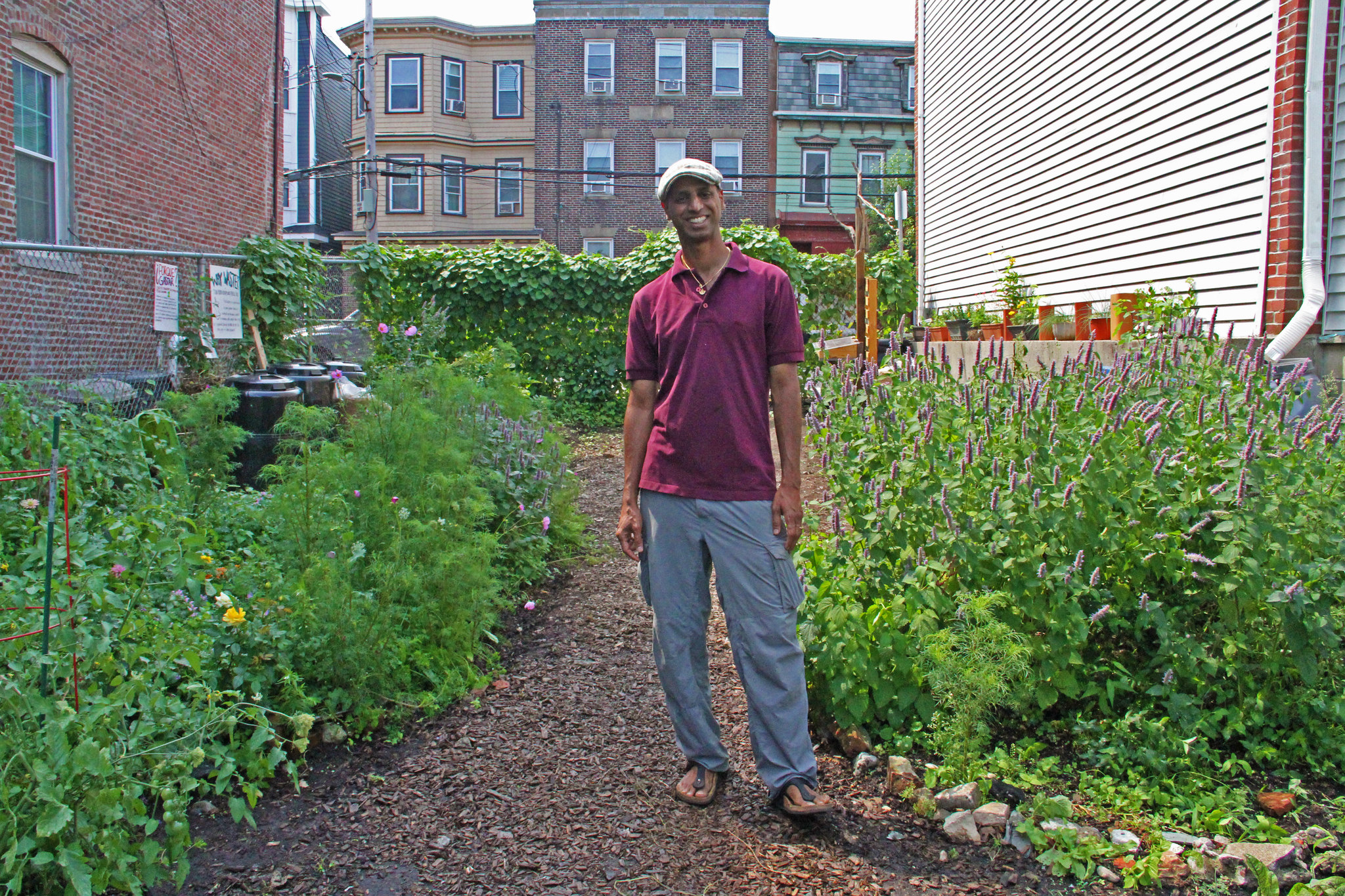On a Saturday morning, Sumner St is quiet, but not at the lot where the Eastie Farm is located. Neighbors and volunteers are caring for the plants that have been growing since the spring, eating the fruits of their labor, and meeting other residents. Kannan is explaining the operations to everyone interested, from how the place was set up to why the corn has not yielded the desired results. “This is a late-blooming Salavadoran corn.”

“Welcome! You are now part of this wonderful community.”
Kannan Thiruvengadam, climate activist, Eastie Farm
“Welcome! You are now part of this wonderful community. You are going to be very happy living here. Eastie is like a microcosm of America: No matter your political views or social interest or passions, you’ll find a way to plug in and further your cause. Whether it is volunteering at the Soup Kitchen, at the Greenway to put on fun events, or with NOAH, you’ll see there are many ways to get involved, and this all comes back to you in times of need. Your community is your source of support.”
Even though Kannan is now sure that your life will be happy here in Eastie, he didn’t always feel this way. Like many others, he arrived in East Boston not because he thought the place was ideal, but because there weren’t many options. Even though he liked the views and the diversity, he did not want to move closer to the airport.
What changed, he says, is he discovered the community that is here.

“So coherent, resilient, loving. Not just of this neighborhood but in general. People who have made the place what it is. Maverick mothers, the younger folks. People eat, laugh, support each other. I saw that and thought a tight community like this would be hard to meet elsewhere.”
Kannan discovered this part of the community through his work at the Eastie Farm, which he founded as his relationship with himself changed. Working in IT, he grew bitter about the way people were being ill-treated, and all that mattered was the profit. At this time, he started taking courses about climate change, and…
“At the end of it I was very freaked out myself. It’s a global phenomenon, a monster. A big monster. And activists say think global but act local. I was coming to a point where I said, ‘I need to act local.’ East Boston is subject to flooding; it has hills so it is subject to mudslides, and it also has a large immigrant population on the lower side of economic means, which means that if people have to take action to fight climate change, they have very few options. The people who will likely be most impacted by climate change have the least means”.
This means that East Boston is a great place for climate activism. It is vulnerable geographically and in terms of the population that lives there. East Boston also has a long tradition of community organizing, as neighbors in this area realized five decades ago that the Airport was acquiring parts of the residential neighborhood for its expansions, adding to air pollution. Efforts to counter this were led by neighbors llike “Mary Ellen Welch. She explains passionately how she got involved, and she was thorough in speaking truth to power.” Work that started five decades ago is now being continued by “people like the current leader of the Youth Conservation Corps, Mariela Cartagena, who is a twenty-something working at Eastie Farm, with Green Roots. She brings all this positive energy and is ready to use it in every channel that she sees fit.”

People interested in climate change activism in East Boston can support many existing efforts. NOAH has an environment department; people can do coastal resiliency with Harbor Keepers; join Friends of the East Boston Greenway, which is extremely vulnerable as a depressed piece of land and is thus vulnerable to flooding. People can also garden at the Eastie Farm.
“I was looking for returns in the short term, that speaks to people in the here and now, cuts across the board to everyone. And that to me seemed like a garden. You’ll see people of all walks of life show up and appreciate it. The hidden agenda there, I’ll reveal it know, is to do climate activism. Resiliency against climate change, and do all that happily. This seemed like a more prudent way of sustaining this fight, building something we should have: connection with ourselves and the land. My own diagnosis is we have lost it. So this would be like an immunity boost to society. If we are together we might be able to fight it.”
